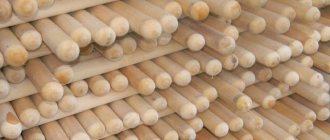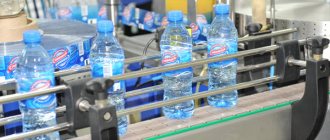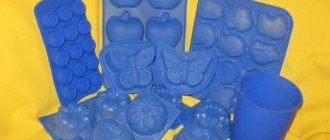In recent years, cinder blocks have become quite common in small-scale construction. They are used for the construction of summer houses, garages, agricultural and other buildings. Cinder blocks are an excellent material for constructing exterior walls.
They have good sound and heat insulation properties. The use of cinder blocks made construction time much shorter. And their low cost is another very important point.
If you decide to organize the production of cinder blocks, then you will need to join an SRO (self-regulatory organization). You must obtain an SRO certificate, for which you need to contact the center for licensing, certification and standardization of the construction industry.
The same center provides services related to personnel training, and also issues certificates of advanced training. You don't have to be a licensed builder to start making cinder blocks. This type of product does not fall under the category requiring mandatory licensing and certification.
What are cinder blocks: brief description, composition
Cinder block is a building stone made from various materials by vibration pressing. In fact, it is an artificial stone. The production technology was developed back in the 19th century - then the filler was slag: waste obtained from burning coal. Hence the name of the building material.
Now other materials are used as filler:
- granite screening;
- broken brick, concrete, cement;
- fine gravel, crushed stone, sand;
- sawdust.
The composition affects the characteristics of the cinder block. Sawdust makes the material more environmentally friendly; sand and crushed stone are heavier, more monolithic. The effect of each filler can be studied separately. When choosing a cinder block based on its composition, it is important to start from specific goals - decide whether you will use the blocks for the construction of residential or commercial buildings.
The filler is mixed with water and bonded with cement. The mixture is then sent to a vibrating machine for molding and compaction.
Cinder blocks: composition and proportions
The cheapness of cinder blocks is due to the use of a wide range of materials as filler, many of which are waste from various industries. Accordingly, there are several recipes for mixing mortar, but cement remains the main component. Builders prefer to use Portland cement M400. If there are cement of other brands, the proportions will be slightly different: brands with a smaller number will require an increase in cement content by 15-20%, the use of higher quality cements allows you to reduce its content. In addition to cement, the solution for cinder blocks includes a filler and a plasticizer. Available materials can be used as filler:
- sawdust;
- dropout;
- ash;
- construction waste, including broken bricks;
- sand;
- small stones, gravel.
Plasticizer is an optional additive, but it improves certain properties of the solution. There are plasticizers that increase the moisture and frost resistance of the mixture, which is important for areas with harsh climates. You can find additives that improve the strength characteristics of the solution, prevent the formation of cracks, and accelerate the hardening process of the working solution. The percentage of plasticizers in the mixture is insignificant: 3-5 grams of the additive is enough to produce a unit of product.
The production technology itself and the composition of cinder blocks provide for the fact that the blocks use special devices and machines that can be made with your own hands
The name “slag blocks” was assigned to this building material, since in Soviet times it was mainly produced from coal slag, a waste product from metallurgical production. Today, other material can act as a filler, but as an example, we will give the proportions of the slag mixture:
- three parts slag;
- one part plaster;
- water.
The slag mixture is moistened before use. Preparing such a solution takes 5-10 minutes, while one cubic meter of the finished mixture will require approximately 340-360 liters of water. The addition of plasticizers improves certain characteristics of the mixture, increasing the cost of the cinder block. When using dyes, it is possible to obtain products with different colors, which improve the aesthetic perception of the building.
Hollow blocks reduce the cost of construction, while simultaneously improving the sound and heat insulation properties of products, but the strength of such blocks does not allow them to be used for the production of foundations and walls subject to high loads.
Applications and types of cinder blocks
Now this building material is more often used in the construction of non-residential buildings: garages, sheds, swimming pools, outbuildings, fences. This is due to the characteristics of the cinder block.
There are several types of material:
- Solid, wall. These are durable blocks that are used to create building structures and load-bearing walls.
- Full-bodied, foundational. Used when laying foundations. They are durable, have increased strength, do not shrink, and the material does not crumble.
- Hollow. They have internal voids. Cheaper, but less durable. Needed for interior walls and partitions.
- Facing. They have a decorative coating and texture on one side. Used for finishing walls and fences on the front side.
Main characteristics of cinder blocks
One of the main parameters of cinder block stone is its strength grade. The parameter value ranges from 35 to 125. Indicates the maximum weight (in kg) that the material can bear per 1 square meter. cm (35-125 kg).
- Cinder block grade M35 is the most fragile and is used for insulation.
- M50, M75 are needed for the installation of partitions and internal walls.
- M100, M125 are considered the most durable and are used when laying foundations and load-bearing walls. Accordingly, the larger the number in the cinder block grade, the greater the load it can withstand.
Frost resistance is assessed in cycles: 15-50. The higher the value, the better the stone can withstand low temperatures. In central Russia, cinder block is used at 35, in the northern regions of the country - at 50.
The thermal conductivity coefficient of slag concrete is 0.27-0.65 W/m*K.
Market situation
Since the late 2000s, the housing market in Russia has grown steadily. Both the number of construction companies and the solvency of citizens increased. In 2007-2014 The volume of individual residential construction increased from 26 million sq. m up to 36 million sq. m.
Since 2014, due to increasing political and macroeconomic instability in the world and Russia, the actual indicator has fallen. Now construction is being restored, and by 2020 the volume is projected to grow to 40 million sq. m. m.
The current situation in the economy (decrease in the real level of income of Russians) provides certain advantages to producers of cinder blocks. People continue to look for cheaper construction methods, and this building material fully meets their needs. A “window of opportunity” is opening for a cinder block business - there is an excellent chance to gain a foothold in the market.
Basic costs for starting production
Opening a small cinder block production does not require major capital investments. To work, you need manual equipment of low productivity.
Table 1. Basic costs for starting a cinder block business.
| Article title | Cost, rub. |
| Registration | 10 thousand |
| Rent of industrial premises, 70 sq. m | 20 thousand |
| Equipment | 100 thousand |
| Salary, 3 people. | 75 thousand |
| Additional expenses | 50 thousand |
| Total | 255 thousand |
The prices here and below are determined based on studying the offer on the Internet, the cost of renting premises and the average salary in the regions of Russia.
Cinder block production as a business
Cinder blocks are distinguished by their affordability and ease of installation (you can independently carry out construction work using this material). Therefore, their production is an economically profitable business.
What are cinder blocks?
Business registration
To open a business, you need to register as an individual entrepreneur and register with the tax authorities.
Required documents:
- premises rental agreement;
- if there are employees, an employment contract.
Production premises
A rented area (at least 50 m2) is suitable; you can consider several options:
- a room under a roof with a flat concrete floor, with heating and a functioning ventilation system (suitable for work all year round);
- fenced without a roof, with a flat floor (asphalt, concrete, compacted earth).
When choosing a location for a workshop, preference should be given to premises close to facilities involved in the extraction of raw materials for building materials (sand quarries, cement factories) to reduce transportation costs.
The location of cinder block sales facilities near the workshop will also reduce transportation costs and reduce production costs.
You can read how to open your own business producing suspended ceilings and what you will need for this here.
Diagram: Dimensions of cinder blocks.
Raw materials for making cinder blocks
To produce cinder blocks you need:
- cement;
- plasticizing additive;
- filler;
- water.
Depending on the fillers, the quality of cinder blocks and the price vary. The most commonly used:
- slag;
- broken brick;
- granular slag;
- sawdust;
- dropout;
- gypsum;
- expanded clay;
- crushed stone;
- shavings;
- sand.
Recipes for cinder blocks may differ not only in the type of filler, but also in its quantity.
The plasticizing additive improves the physical characteristics of the product (water and frost resistance, strength).
Staff
The mini-workshop can be operated by 2 people (they do not need to have professional skills; the operating principle of the equipment is explained on the spot). With 2 shifts, 2 workers will be required on each shift.
Personnel and space for making cinder blocks.
Equipment for making cinder blocks
In the process of manufacturing cinder blocks, you can use installations that differ in cost and technical characteristics. You will definitely need a vibrating machine. You can buy inexpensive equipment (for 60 thousand rubles), but it has low productivity.
To produce 75 cinder blocks per hour you need:
- concrete mixer;
- vibrating sieve;
- vibration machine.
Registration
You can register your business as an individual entrepreneur or LLC. When choosing an OPF, you need to take into account production volumes and available distribution channels. Keep in mind that large retail chains prefer to cooperate with legal entities.
This business plan for cinder blocks involves opening a small production workshop at home, so an individual entrepreneur will be the optimal form of doing business. Registration in this case is faster, requires less money and effort in collecting documents.
When choosing a tax system, it is best to take the “simplified” one. When registering a new construction business, documents must indicate OKVED code 23.69.
Advantages and disadvantages of making cinder blocks at home
Advantages of cinder block production:
- wide scope of application (construction of private houses, workshops, garages, utility units, etc.);
- high heat and noise insulation;
- possibility of self-laying blocks;
- you can start production 2 days after installing the equipment;
- high laying speed;
- the ability to change the composition of the concrete mixture;
- low cost compared to other building materials (foam concrete, brick, aerated concrete).
Flaws:
- depending on the season;
- without external decoration, the appearance of the building is unattractive;
- low environmental friendliness when using blast furnace slag.
What are cinder blocks?
Cinder blocks are a building material for construction, construction of walls and partitions.
It is produced by vibrocompressing the solution using special molds. The base is cement and any available filler (slag, sand, gravel, perlite, etc.). Making handmade soap at home as a business: step-by-step instructions and a business plan with calculations are contained in the article at the link.
Certification
According to Russian legislation, cinder blocks do not have to be certified according to GOST requirements. But it is strictly recommended to do this, because a product with a certificate of conformity will sell better. In addition, some stores, when accepting goods for sale, make one of the mandatory conditions the availability of documentation confirming the quality of the building material.
You can obtain a voluntary GOST certificate. Also having a good effect on EZ sales is the expert opinion of Rospotrebnadzor, which can actually be obtained after checking the products by government experts. EZ guarantees the safety of products and their compliance with hygienic and sanitary standards.
Production room
To produce artificial building stone, you will need a room of at least 40 square meters. m. It should be divided into a production workshop, warehouses and a room for drying finished products.
In summer, it is possible to produce and store products outdoors under an awning.
The premises requirements are as follows:
- flat floor;
- protection from precipitation (defective roof);
- connection to water supply;
- bright lighting;
- excellent ventilation system;
- heating system (for operation in the cold season).
There are no other requirements. This means that an entrepreneur can organize the production of cinder blocks even in a garage or similar premises - provided that it is equipped. There are also no requirements regarding the distance of the workshop from a residential area.
Concrete preparation
At the moment, many different solutions have been compiled for the production of cinder blocks, depending on what fillers are used for this. For example, a concrete mixture is prepared by mixing four parts of fine granite screenings, four parts of slag granules and one part of cement. All this is poured with water in which the plasticizer is dissolved, and then thoroughly mixed.
The cinder block production technology assumes that during the mixing process the concrete is impregnated with the specified additive. A plasticizer is necessary to speed up the drying process of the blocks. In addition, it is possible to improve the quality characteristics of cinder blocks: fewer cracks form, water resistance improves, and the degree of resistance to frost increases.
So, if we talk about how to make a cinder block, we can give the following example of a raw material recipe for making a thousand pieces: 18 tons of granite screenings, 1.8 tons of M500 cement, 25 kilograms of a universal plasticizing additive, water. There are other recipe options.
Equipment
Making cinder blocks in a small enterprise at home involves the use of small equipment - a manually controlled vibrating machine. This way, it will be possible to minimize initial costs and quickly create inventory for further sale.
Table 2. Equipment costs for the workshop.
| Article title | Cost, rub. |
| Vibrating machine, capacity up to 450 pcs. per shift | 30 thousand |
| Concrete mixer, volume 200 l | 20 thousand |
| Wheelbarrow, 2 pcs. | 5 thousand |
| Racks (20 pcs.) | 45 thousand |
| Total | 100 thousand |
Work will be carried out in 1 shift. As sales volumes increase, a second shift can be opened.
Manufacturing technology
In the case when you are not planning large-scale construction work, the construction of a multi-story building, and so on, the blocks can be created without vibration compaction.
Assembling the form
Assembling the mold is not a difficult process. The form is made of wood or metal, its dimensions must correspond to the dimensions of the future cinder blocks, on average it is 40x20x20 or 39x18.8x19 cm.
The structure consists of a bottom and side walls. The edges of the mold are made from sheets of metal 5-6 mm thick. The walls are welded together or notches are made in the transverse and longitudinal walls with a grinder, with the help of which they are attached.
If desired, and also to speed up the process, you can assemble a form with several cells 2,3,4 and even 6 or 8. To do this, it is enough to increase the length and width of all edges and install additional partitions between the cells.
To create hollow blocks, cylinders made of wood or metal, usually 2-3 pieces, are attached to the bottom using ordinary hardware (screws or nails). To save money and make your work even easier, you can use regular empty bottles instead of cylinders.
If you use wood as the walls of the mold, then they must be painted with oil paint so that the solution does not stick to the wood.
Production using a mold
Ideally, for the cinder block production process, find a secluded room with a good ventilation system, a flat floor and dry air.
Step-by-step instructions for producing blocks using a mold:
- To begin with, all prepared components must be placed in a concrete mixer, adhering to the proportions indicated above.
- When the solution is ready, fill the form with it. In order to create voids in the thickness of the blocks, bottles are placed inside the mold with the neck up, usually two or three, pre-filled with water.
- The mixture is carefully compacted so that it fills all the voids and removes air bubbles, because the more air the block contains, the less quality and reliable it is.
The solution is left for 5-6 hours, after which the bottles are removed, and the blocks themselves are left in the mold for another day. Afterwards, the blocks are taken out and stored in stacks in a dry place inaccessible to sunlight. They are dried for 28 days so that the solution completely hardens and gains its ultimate strength.
In order to prevent cracking and other deformations, the blocks should be sprayed with a small amount of water for the first few days, after which they should be wrapped in a layer of plastic film.
Production using a vibrating machine
A vibrating machine makes it possible to speed up and facilitate the process of producing cinder blocks significantly, but the price for such a unit is quite high. Therefore, for one-time use, it is better not to buy a machine or assemble it yourself, although in this case you will need certain knowledge in electrical and engineering.
The price of a machine depends on three main factors: manufacturer, power and productivity.
Here are 3 simple steps to make blocks at home using a vibrating machine:
- The mixture is mixed in the required proportions in a concrete mixer.
- The solution is filled into a mold with a small slide. After that, the vibrator is turned on for 5-10 seconds, the solution settles. The procedure is repeated until the clamp settles on the limiter.
- Then the machine is turned on again for 10-15 seconds, and the mold is removed without turning off the unit.
Within a week (5-7 days), the blocks are dried, and their complete hardening occurs no earlier than after a month.
If you have added a plasticizer to the composition, then within a few hours (7-8) after removing the blocks from the mold they can be transported and stored.
Cinder blocks are stored in pyramidal stacks of up to one hundred units in each stack.
Workers
The production workshop must employ 2 people. No skilled workers are needed to maintain the process. It is enough for workers to be trained in how to operate the equipment. People serve as maintenance personnel because most of the work is done by the equipment.
You also need a sales representative (driver), whose tasks are to look for clients, conclude contracts with them and sell cinder blocks, organize delivery.
The role of a senior manager can be performed by the entrepreneur himself - this will reduce fixed costs and allow monitoring the quality of staff work. In the future, when control on the part of the businessman is no longer required, powers can be delegated to another employee.
Brief description of cinder block production
Producing building materials is quite simple:
- The components (filler, water, cement) must be mixed in a concrete mixer. Here you can add plasticizers - additives that can improve water resistance, frost resistance, increase the strength of the finished material, and reduce the number of cracks.
- Transport the prepared solution and load it into a vibropress - into appropriate forms with or without partitions. This is where the main work happens: the machine processes the molds using pressure (pressure with a punch) and vibration. The process lasts about 90 seconds.
- The finished blocks are pushed out of the brick making machine. Next comes the process of hardening. With plasticizers they can be ready in 8-10 hours, without them - about 36 hours.
- The blocks are stored and undergo final drying. The products will be fully ready for sale in approximately 30 days.
Drawing of a machine for the production of cinder blocks
A machine with a vibrating table or vibrating press is a more complex device. Without certain metalworking training, it will be problematic to make it, however, such machines are assembled, successfully operated, blocks are cast and houses are built from them. Here is an approximate drawing of such a machine with approximate dimensions.
The machine is designed for the production of blocks measuring 390x190x188 mm with a hollowness of 30%.
The most important task is to complete the matrix in which the block will be formed. It is made of steel sheet with a thickness of at least 3 mm.
Everyone can determine for themselves the feasibility of manufacturing such a machine. When working on the device, special attention should be paid to the accuracy and strength of the welds.
Sales
It’s worth thinking about product sales channels at the planning stage. It is necessary to evaluate existing construction sites in the region. Cinder blocks are most in demand as a building material for outbuildings where good heating is not required. These are complexes for processing and storage of grains and agricultural crops, production and storage facilities, parking lots, and sheds.
The blocks will be in demand from private developers. Accordingly, you need to use all the possibilities of regional advertising:
- advertisements in newspapers, on local TV channels;
- posting leaflets near places where construction work is ongoing and in the private sector;
- distributing leaflets near construction supermarkets.
You can also negotiate sales with small construction stores. It is helpful to spread the word about cinder blocks through friends and acquaintances.
The procedure for making cinder blocks using a homemade brick press
You can mix the working mixture manually, but using a concrete mixer will significantly simplify this work and improve the quality of the solution. If the construction volumes are large, the concrete mixer will certainly be useful for other general construction work, otherwise you can borrow it from friends.
Before pouring the solution into the molds, they must be lubricated with machine oil or a similar material, which will subsequently facilitate the removal of the matrix and prevent the compacted mixture from sticking to the walls of the mold.
The finished mixture is placed in a matrix, after which the solution is exposed to a pressing punch and a vibrator. After compaction is completed, the mold rises, leaving the finished blocks in the tray. The entire process, from filling the solution to raising the matrix, takes about a minute (when using a hard solution and high-amplitude vibration).
The hardening time of finished products when manufactured independently is from a week to a month, depending on environmental conditions.
If you store them in a dry and warm room, 5-7 days will be enough to achieve the desired degree of readiness; if stored outside and the air temperature is not lower than 20 degrees, about a month will be enough. Cooking building blocks at lower temperatures is not recommended.
When using such forms, the solution must be uniform and thick enough to fill these forms without creating voids
Economic calculation
With a well-thought-out sales organization, a cinder block business can quickly pay for itself.
The productivity of the mini workshop is 450 blocks per work shift. With 26 shifts per month, it is possible to produce 11.7 thousand cinder blocks of standard size 400x200x200 mm, grade M50 (solid).
The minimum cost of such a block is approximately 25 rubles. When selling all manufactured products, monthly revenue will be 292.5 thousand rubles, however, we will take into account that at first cinder blocks will cost 150 thousand rubles. monthly (about 50% of total production).
Initial costs will amount to 255 thousand rubles. So the production of cinder blocks as a business will pay for itself in about 1.7 months. The payback period can be increased to 1 quarter (3 months) due to expenses not taken into account in the business plan.
Making your own cinder blocks
To make them at home, it is not at all necessary to have deep knowledge in the construction business.
It will be quite enough to know the following things:
- components used;
- required dimensions;
- cinder block production equipment;
- manufacturing technology.
- Cinder block fence
- Brick presses for block production
Components
This includes cement, as well as water and various fillers, the main one of which is slag. This word refers not only to waste from metallurgical production, but also to residues from burning coal in a boiler room.
In the photo - slag from a blast furnace
If there is no slag, it can be replaced with other fillers. For example, crushed brick or sawdust.
When preparing a concrete solution, the proportions of the components will be as follows. For 1 bucket of cement you need to take 3 buckets of sand and 5 buckets of slag. And, using such equipment for the production of cinder blocks as a concrete mixer, prepare the solution.
Advice! For production, they usually use cement grade M - 400. But it is better to take M - 500. It can be poured 10-15% less.
Cinder block sizes
The industry produces such products with the following parameters of length, width and height: 390x190x188 mm. There is another variety with dimensions 390x120x188 mm. It is used for partitions.
When making blocks for yourself, it is not necessary to make them according to factory parameters. They can be changed in any direction convenient for you. As the external dimensions and volume of internal voids change, the weight of the object will increase or decrease.
Usually it ranges from 17 to 25 kg. Therefore, in any case, working with him will not be easy.
Dimensions: length, width and height
Blanks for creating cinder blocks
In the factory, special metal forms are used for this purpose. But this is not the only equipment for manufacturing; production of cinder blocks on a large scale also requires the use of presses and vibrating tables.
A home handyman can get by with much simpler and cheaper devices. For example, wooden forms.
They can come in a variety of sizes and designs. But their essence is the same. This is simply a container into which concrete is poured.
It gives the product the desired shape and holds it until the mixture sets. After this, the finished product is removed from the workpiece.
To make this process faster and easier, wooden forms are often made collapsible. In addition, they are often deprived of a bottom by simply placing film under the bottom.
This is what the drawings of equipment for the production of cinder blocks look like
The voids inside the block are created using bottles. Thanks to the water poured into them, they do not float out of the solution.
The procedure for creating cinder blocks
First, let's prepare the concrete solution. To do this, take all the components except water and mix them thoroughly until a homogeneous mixture is formed.
Then, gradually add water and stir the whole mass again. It’s more convenient to do this with a concrete mixer, but you can do it yourself. The resulting solution should have a viscosity similar to thick sour cream.
We use a concrete mixer
Having finished preparing the concrete, pour it into molds. After pouring, it is advisable to compact the solution.
In industrial enterprises, special equipment is used for this. At home, you could use a construction vibrator.
If you do not have such a device, you can do otherwise. You need to take a hammer and tap the outside of the mold with it.
This technique is used to get rid of voids inside the solution. Otherwise, the presence of air pockets will make our product less durable.
This is how you can make cinder blocks - the equipment for the production of which will be extremely simple. In our case, these are ordinary wooden blanks.
After 2-4 days the blocks can be removed. But we will be able to use them for their intended purpose no earlier than after 28 days. Only during this time will they dry completely and gain the required strength.
It is important not to overdry the material. To avoid drying out, the blocks should be sprayed with water from time to time or simply covered with film.
Industrial equipment for the production of cinder blocks
If you need a large amount of material, then it makes sense to think about a machine for its production. If you have sufficient technical knowledge and metalworking skills, you can make it yourself.
But it is much easier and more reliable to purchase a device manufactured at a factory. Moreover, it will not necessarily be products from China. The domestic industry is also quite successfully producing these devices.
An example of this is the Russian concrete block press under the Condor brand. It is a real mini-factory for the production of cinder blocks.
Its advantages are as follows:
- does not require the purchase of additional equipment, for example, lifting devices - loading and unloading here is carried out manually;
- It is light in weight, making it very mobile;
- easy to use - only two people are required to operate it;
- can produce not only cinder blocks, but also paving slabs.
Equipment for the production of cinder blocks for the production of paving slabs
Such mobile devices are popularly called “laying hens”. They are usually shaped for one or two blocks, which are produced in one cycle.
There are also stationary models of such machines. But they are used only in industrial production. Therefore, we will not consider them.
A vibropress is not the only type of equipment for the production of cinder blocks that we will need. In addition to this, it is also worth purchasing a concrete mixer.
It will significantly reduce the cost of time and effort. She will prepare a solution of the required consistency in just five minutes.
Household concrete mixer
There are various types of such devices on sale. For home use, a small device operating on a voltage of 220V is quite suitable.











